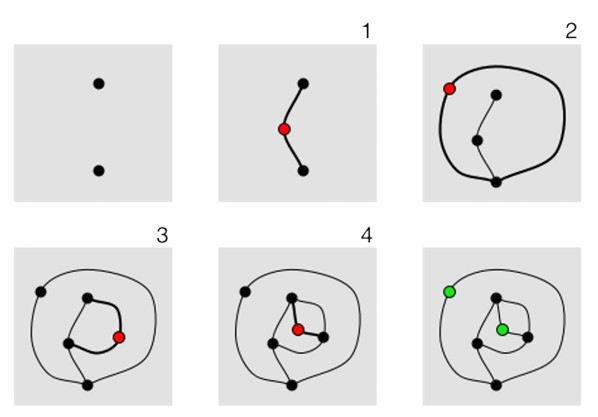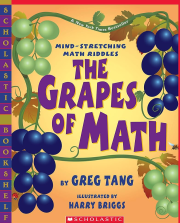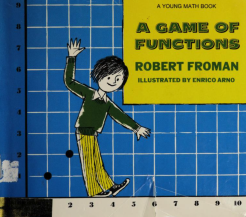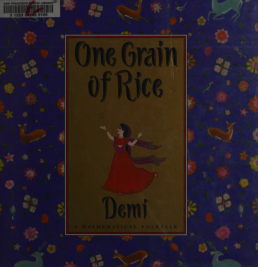
Estimations
![]() Activity! Estimation
Activity! Estimation
(from Family Math) Estimate the following - then find out the answers (write down your answer, then find the correct answer next to it):
- How many times do you think you chew each bite of food? (Use a chart to calculate an average)
- How many 1's are there on a calendar?
- How many books in your room? Living room?
- How many windows in your house?
- How big is your room?
- How many letters of the alphabet are NOT included in the names of the days of the week?
- How many cans in your kitchen cupboard? How many grams total?
- Next time you are in the grocery store, pick three random things and approximate the total cost.
- How many cases do you need if you have 600 bottles, and each case holds 24 bottles?
- How many times a day does a person yawn? (How can you find the answer?)
![]() Activity! Sprouts
Activity! Sprouts
"Sprouts" invented by mathematician John Horton Conway. Graph Theory
Material: Pencil, large blank paper.
First, draw three or four dots anywhere on the page. First player then draws a line between two dots or starts and finishes in a loop from a single dot. Having drawn his line, he makes a new dot somewhere along it. Next player does the same. Rule - none of the lines may cross and no dot must have more than three lines coming from it. Winner is the last to be able to draw a line.
In mathematical terms, Sprouts is related to the problem of counting the number of spanning trees in a complete graph. A spanning tree is a connected subgraph of a graph that contains all the vertices of the graph without any cycles. By analyzing the graphs formed during a game of Sprouts, mathematicians can explore connections to various concepts in graph theory, such as Euler's formula, planarity, and chromatic number.
![]() Activity! Lulu Counting
Activity! Lulu Counting
 Using Lulu stones, pencil and paper first person to get to 50 (or 100) wins. Make your own - using 4 buttons, coins or hardened clay. One side blank, other side with one, two, three or four. First player throws the lulu stones and adds all numbers facing them. If any of the lulu tiles fall with their blank side up, the next player gets to throw them as a bonus to their regular turn. If second player gets number tiles during this bonus, write down the points (or remember) and add it to your regular turn (of throwing all four stones). If blank, nothing happens, the second player just collects and throws all four stones.
Using Lulu stones, pencil and paper first person to get to 50 (or 100) wins. Make your own - using 4 buttons, coins or hardened clay. One side blank, other side with one, two, three or four. First player throws the lulu stones and adds all numbers facing them. If any of the lulu tiles fall with their blank side up, the next player gets to throw them as a bonus to their regular turn. If second player gets number tiles during this bonus, write down the points (or remember) and add it to your regular turn (of throwing all four stones). If blank, nothing happens, the second player just collects and throws all four stones.
![]() Activity! Math Riddles
Activity! Math Riddles
Video of Riddles by Tang
![]() Activity! Multiplication Game
(from ABC Classe de Florent)
Activity! Multiplication Game
(from ABC Classe de Florent)
![]() Activity! Numbers in the World
Activity! Numbers in the World
Talk with kids in a numerical sense. Age, height, weight, quantities and more! Try books "Numbers in the World" to demonstrate how numbers are all around us. After reading this kind of book, ask child to think again to describe their world using numbers.
Resources
Early Childhood Math Groups Resource ages 5-7
Division in Fiction by Math Through Stories Multipication in Fiction by Math Through Stories and MORE in Fiction by Math Through Stories
 Looking to team up? Love numbers, math and the mathematical? Hate math? Struggling? Know kids? Know how to code? Have other skills? Consider creating a program together to target one learning difficulty in math together! It can be a game, it can be a way of explaining things in a different way, or a hands on experience! Contact me @ admin@parkfuturesedu.com
Looking to team up? Love numbers, math and the mathematical? Hate math? Struggling? Know kids? Know how to code? Have other skills? Consider creating a program together to target one learning difficulty in math together! It can be a game, it can be a way of explaining things in a different way, or a hands on experience! Contact me @ admin@parkfuturesedu.com




















































